Tool Maintenance

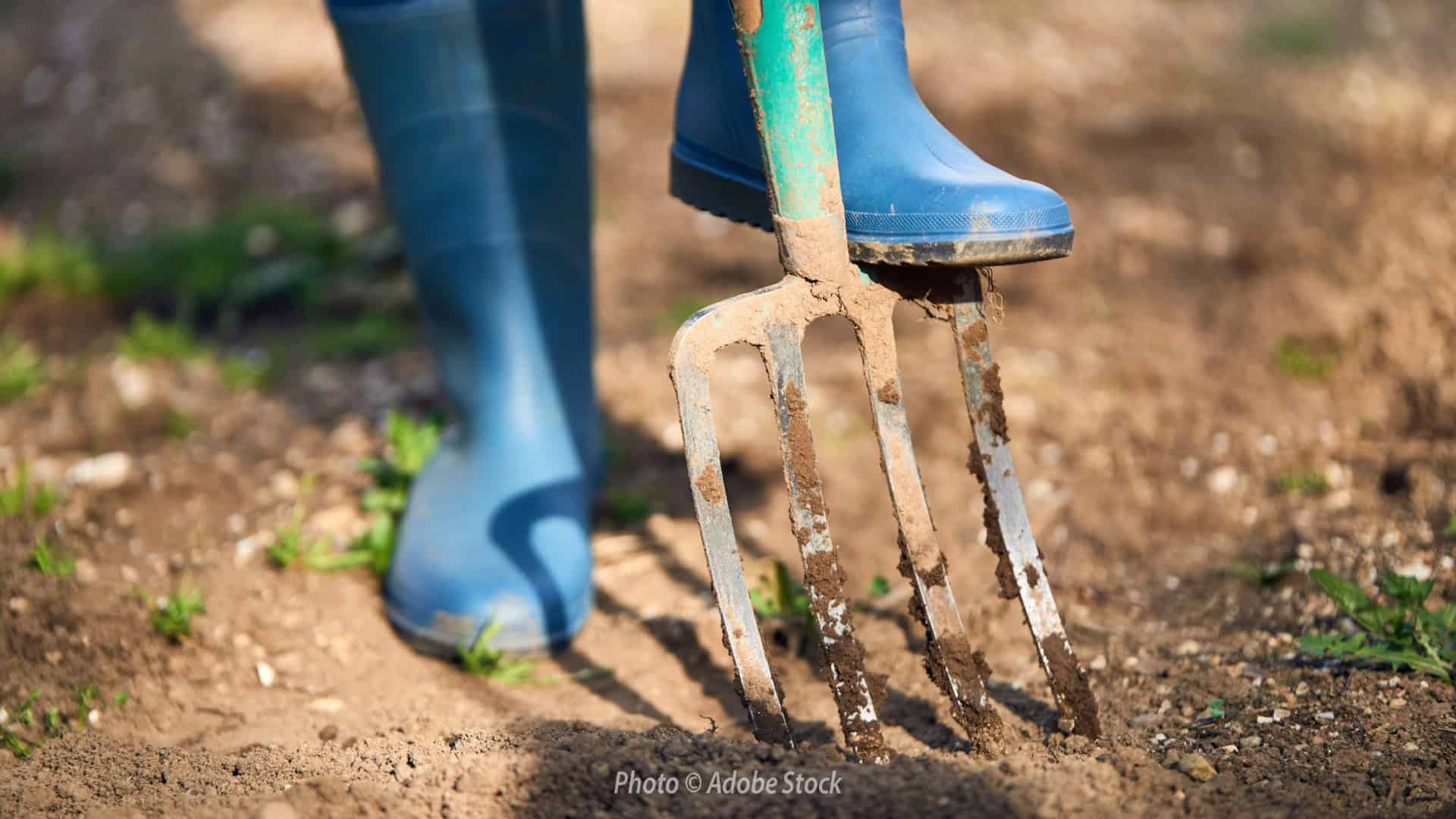
Tips for Garden Tool Maintenance and Care
Taking the time now will reward you well when spring smiles again
By: Kathy Wolfe, Skagit County WSU Extension Master Gardener
What a gardening year it has been! All of the digging, seeding, watering, planting, pruning, mulching, raking, and harvesting have rewarded us well. The garden and gardener are now prepared to enjoy a respite going into the winter months. But wait. Are you sure you are done? Did you neglect to clean your garden tools? Guilty as charged, Your Honor!
Ideally, it is best to clean and disinfect your implements every time they are used, but most of us probably don’t. Late fall is a great time to give these hard-working tools a good cleaning and sharpening to prepare them for storage and the new gardening year ahead. Any tool with nuts and bolts, screws, blades, or chains will need sharpening and maintenance.
Just as a keen kitchen knife eases food preparation, sharp garden tools allow more efficient cutting, are easier to use, and last longer. A sharp blade is less likely to slip and will cause less cell damage to the plant, while a dull blade will crush, not cut the plant stem. The sharp edge allows the plant to heal faster with less chance of infection due to adverse weather or fungi.
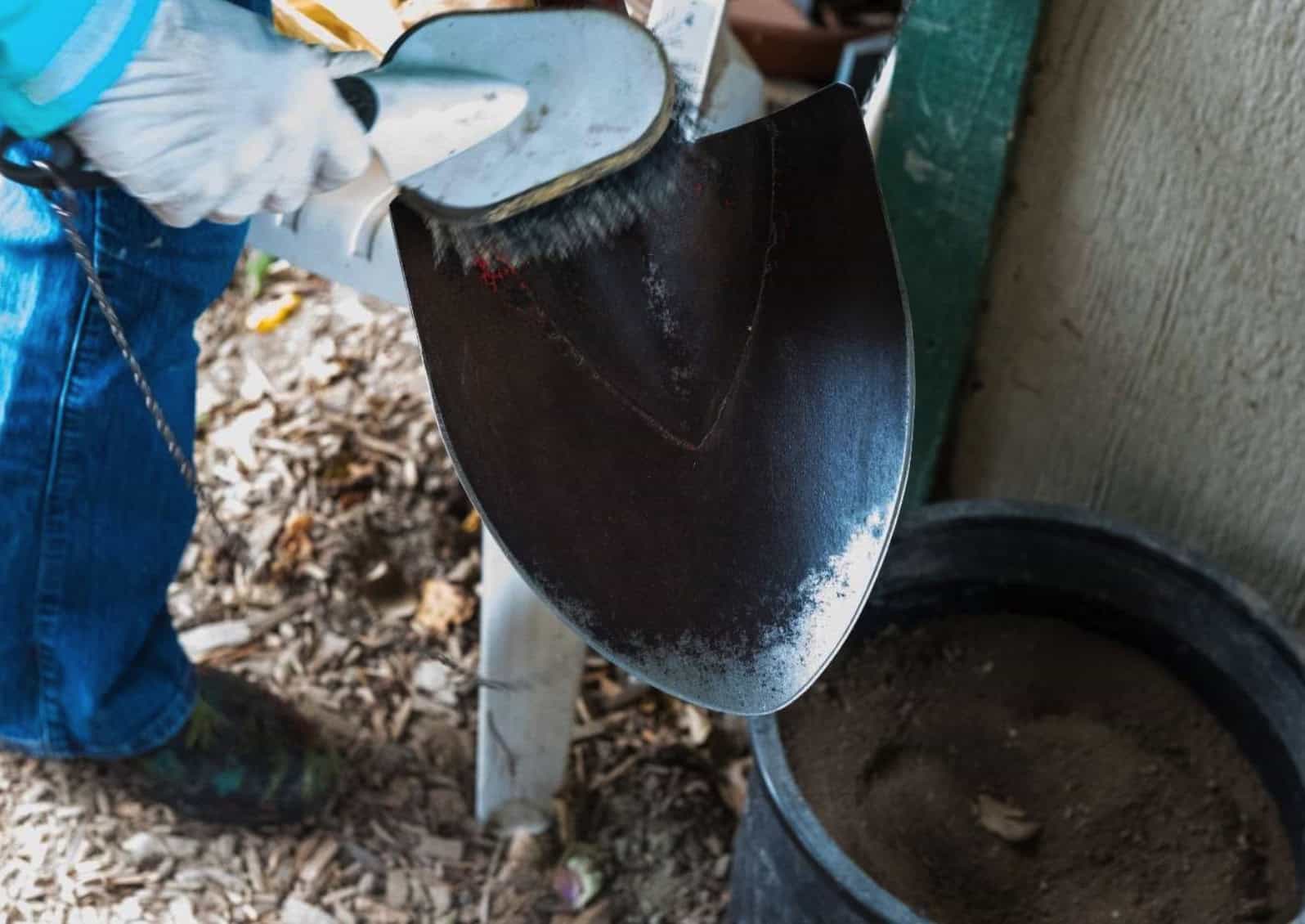
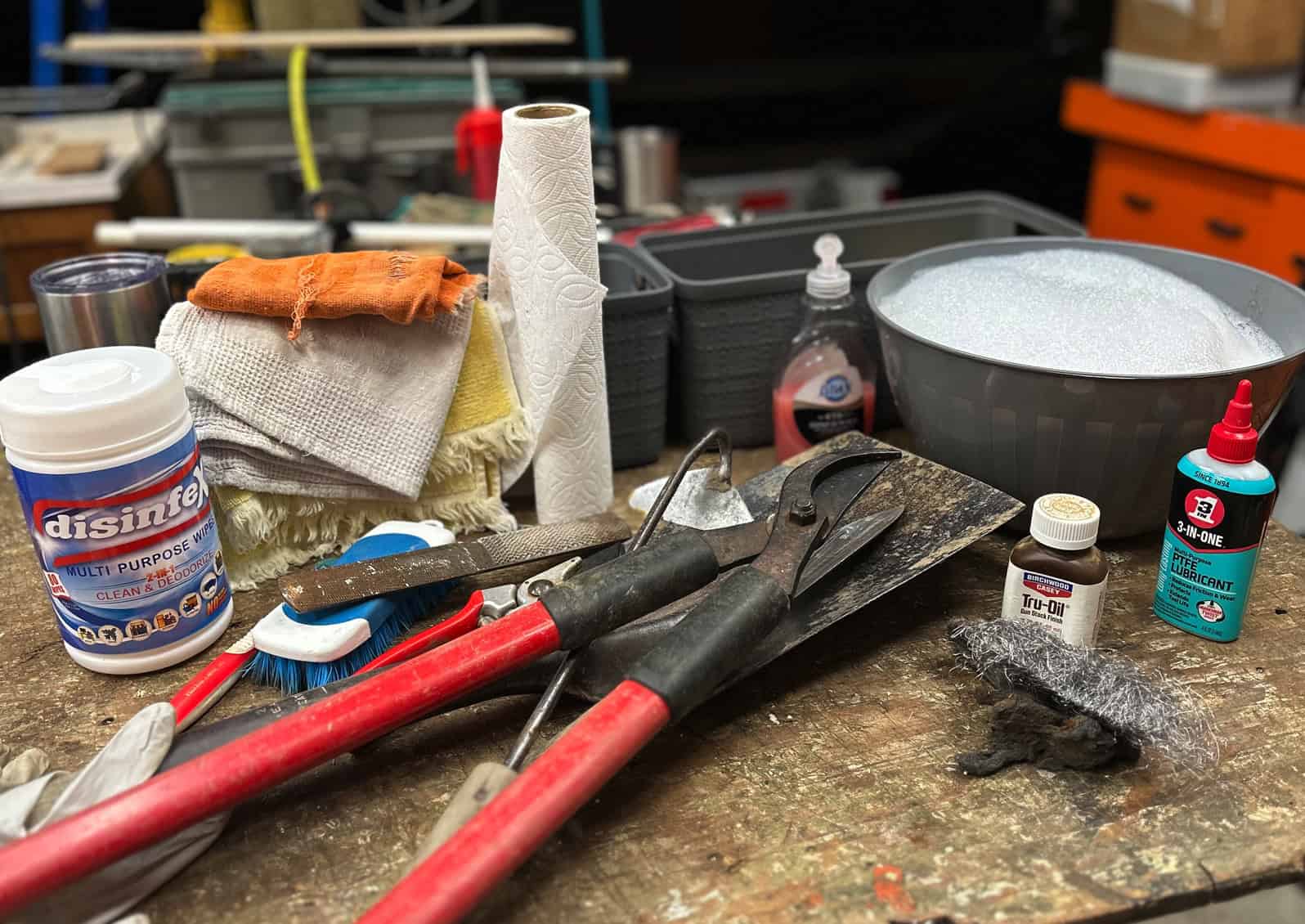
Shovel blades should be sharpened to increase ease of use. Sharpen them at a 45-degree angle by running a file across the edge until sharp. For pruners, sharpen periodically using a whetstone or carbide sharpener to give the blades a finer edge. Sharpen at the same angle of the blade, taking care to file out any notches or cuts. For larger or more irregular blades, research techniques from trusted sources and follow directions closely, or consider taking these blades in for professional honing each year. Many find that lawn mower blades are particularly tricky, as improper sharpening can make them out of balance, which can harm the mower motor as it turns at high speeds.
Clean garden tools prevent the spread of disease around the garden. Thorough cleaning deters the spread of infection when working with infected plants or pruning out diseased limbs. Keep a container of rubbing alcohol, bleach (1 part bleach to 9 parts water), or disinfectant on hand to clean blades between pruning each plant. Clean sticky plant sap from blades of saws or pruners using paint thinner, then wipe down with a rag.
The main enemy of most metal tools is rust. To clean, soak rusty tools in a weak (1:1) vinegar/water solution for 24 hours. Cheap white vinegar works well for this. After soaking, dry it with paper towels, and then use steel wool to remove the rust. You may have to repeat the process several times before all rust is removed. Severely rusted tools may require sanding with rough sandpaper or a wire bristle brush. In extreme cases, use a drill with a wire brush attachment or wire wheel. Be sure to wear safety glasses during this procedure. Use a light, circular motion rather than scraping to avoid thinning or scratching the metal beneath. After any de-rusting, wipe the metal with a coat of oil. To avoid rust problems, consider purchasing stainless steel tools.
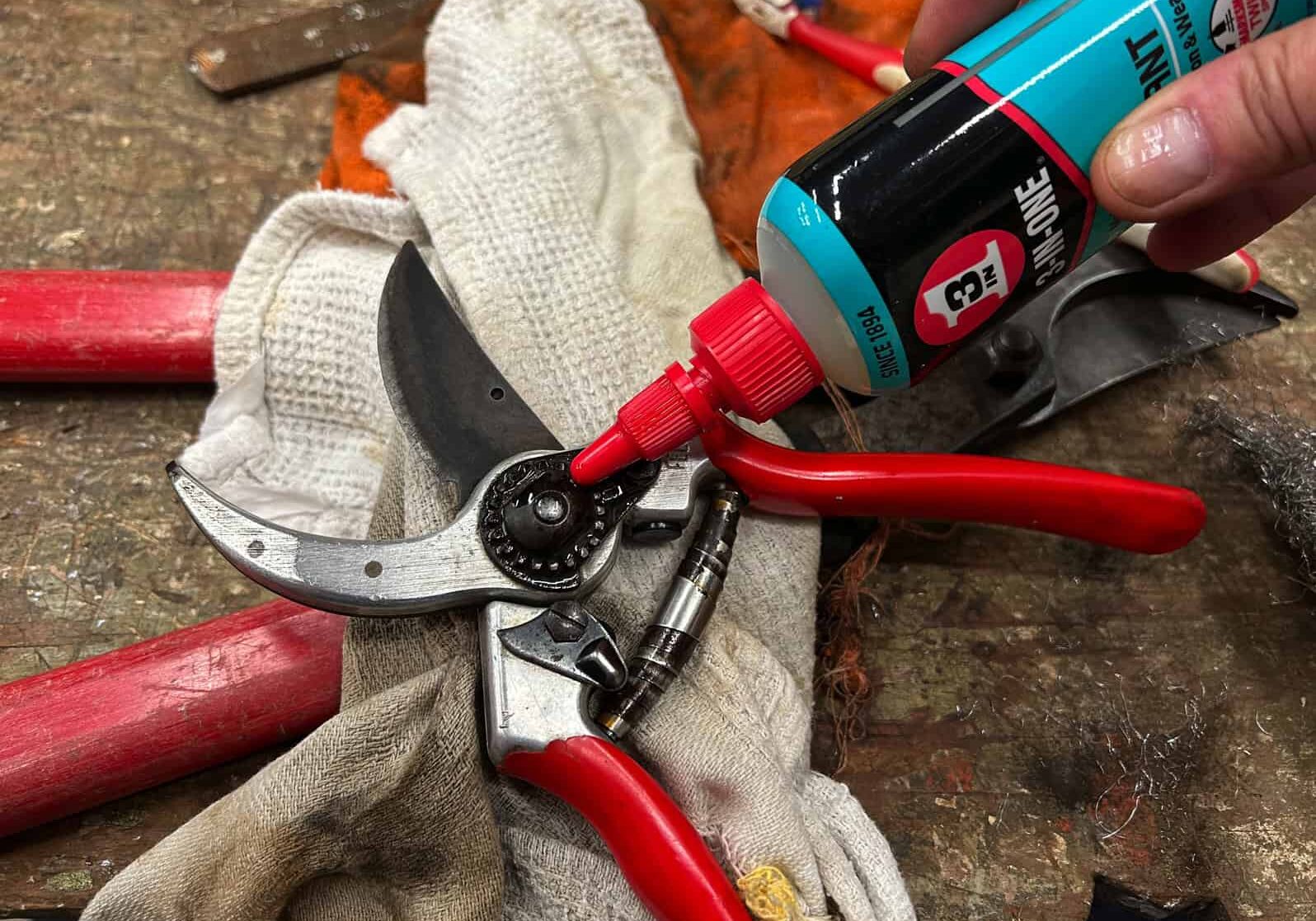
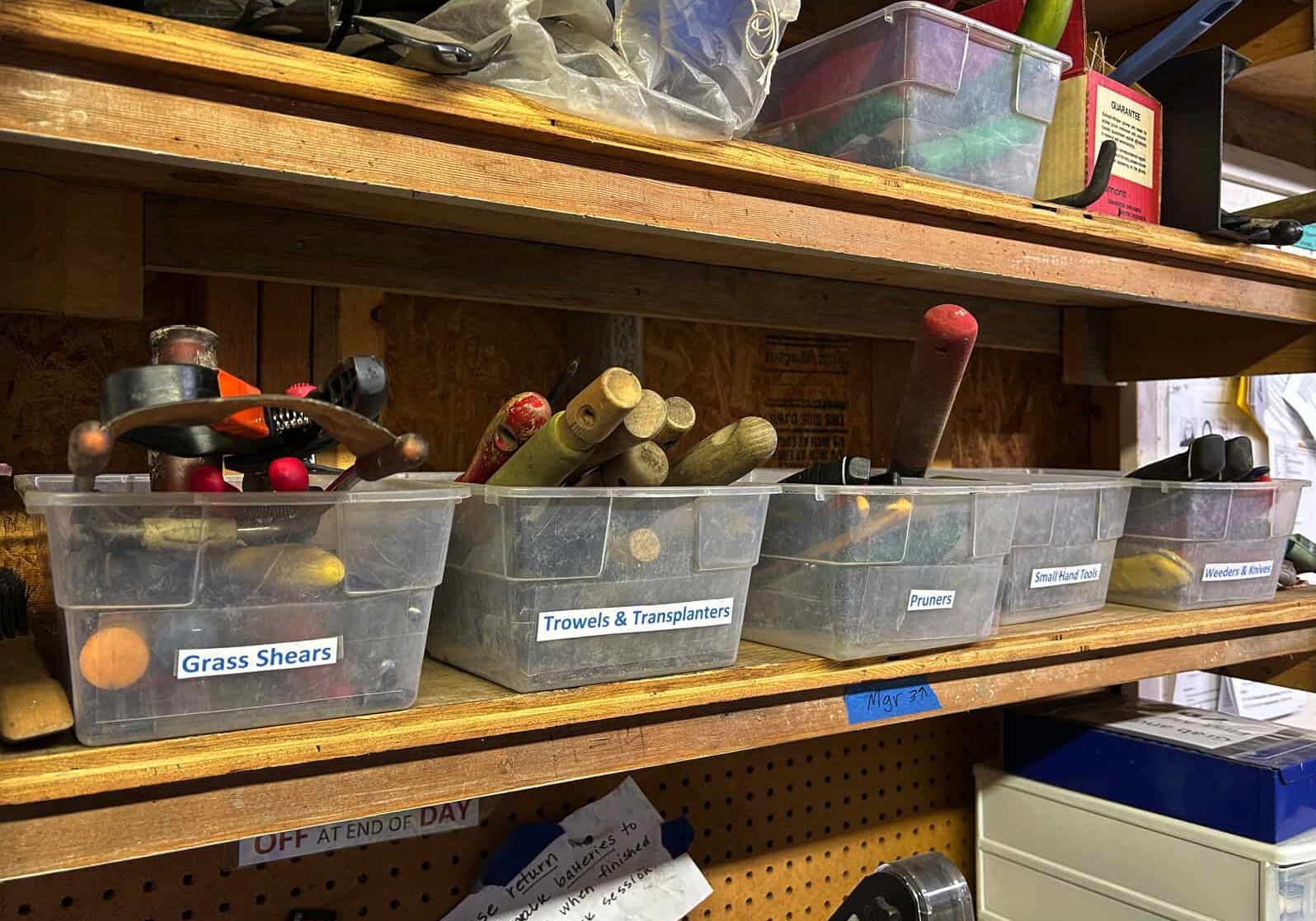
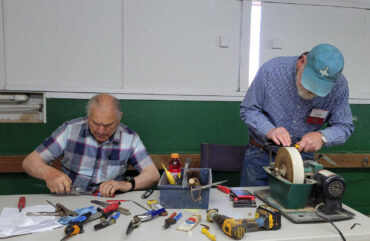
Master gardeners offer free tool sharpening at the annual Plant Fair in May. © Photographer: Kay Torrance / Skagit County WSU Extension Master Gardener
For day-to-day maintenance for tools used in soil, such as shovels, hoes, and garden forks, it is convenient to set up a cleaning station which includes a stiff wire brush with a scraper end, a rag, and a bucket filled with sand or kitty litter and moistened with mineral or linseed oil. When your gardening day is done, use a stiff wire brush to dislodge the debris, and then rinse your tools using a stream of water from the garden hose. Dry thoroughly. Drag the tool through the sand/oil mixture to coat the blade. The oil coating will retard moisture and limit rust, and the sand helps provide abrasion to remove residual soil.
Pruners are most easily washed with a nail brush or scrub pad using soap and water. Dry thoroughly, then lubricate a drop or two of multipurpose household oil, machine oil, or grease into the pivot point to allow blades to move freely and not catch or rub. Use mineral spirits to remove residue. If pruners are dull, give them a sharpening, carefully sliding the blade along the stone in one direction until sharp. Keep the file at the correct angle to the edge of the tool surface you are sharpening. Next, check that all tool bolts and screws are tight.
Dry wooden handles can split or break. Using a lightly oiled rag near the sand bucket, swipe the handles after each use. Twice each season, sand the wood with medium-grit sandpaper, then rub with a slightly moistened linseed oil rag to create a protective layer. Allow all oil rags to dry in the open air to avoid the risk of combustion. Store wood-handled tools indoors in a dry storage area.
The correct storage of garden tools will extend their life and keep them sharper longer. Store items separately in a dry place, such as a shed, garage, or closet. Keep them off the floor to prevent moisture, rust, and dulling. Consider adding hanging racks or a pegboard rack system. Place a waterproof cover over any machine, such as a lawn mower, that must be stored outside due to a lack of storage space.
Taking the time to set up a simple cleaning station for next year and doing some additional cleaning and maintenance of your garden tools now will reward you well when spring once again smiles upon us.
REFERENCES AND ADDITIONAL READING:
Disinfecting Your Garden Tools. University of Florida Institute of Food and Agricultural Services (UF/IFAS), Gardening Solutions. Retrieved from: https://gardeningsolutions.ifas.ufl.edu/care%20/tools-and-equipment/disinfecting-%20tools/
Grant, B. (rev. 2021). Caring for Garden Tools: Tips for Cleaning Garden Tools. Garden Know How. Retrieved from: https://www.gardeningknowhow.com/garden-how-to/projects/cleaning-gardening-tools.htm
Eckelberg, J. and Saxe, C. (rev. June 2013) “Maintaining Lawn and Garden Tools”. University of Wisconsin Extension, Juneau County, Item #XHT1214. Retrieved from: https://hort.extension.wisc.edu/files/2014/11/Maintaining_Lawn_and_Garden_Tools.pdf
Prichard, Phillip. (2023) “How to Care For and Winterize Your Garden Tools”. University of Georgia Extension, Paulding County. Retrieved from: How to Care For and Winterize Your Garden Tools | Paulding Vine (uga.edu)
Kappos, Carmen. (2015) “Garden Tool Care”. The Backyard Gardener. University of California, Master Gardeners of Inyo & Mono Counties. Retrieved from: https://ucanr.edu/blogs/blogcore/postdetail.cfm?postnum=18779
“Care and Maintenance of Garden Tools.” 10-Minute University, Clackamas County Master Gardener Association, Oregon State University. Retrieved from: https://clackamascountymastergardeners.org/wp-content/uploads/2022/02/garden-tool-care.pdf

Kathy Wolfe
ABOUT THE AUTHOR:
Kathy Wolfe has been a Skagit County WSU Extension Master Gardener since 2002. She is co-manager of the vegetable garden at the Discovery Garden on SR 536 west of Mount Vernon.
Good information. Thanks for the reminder!